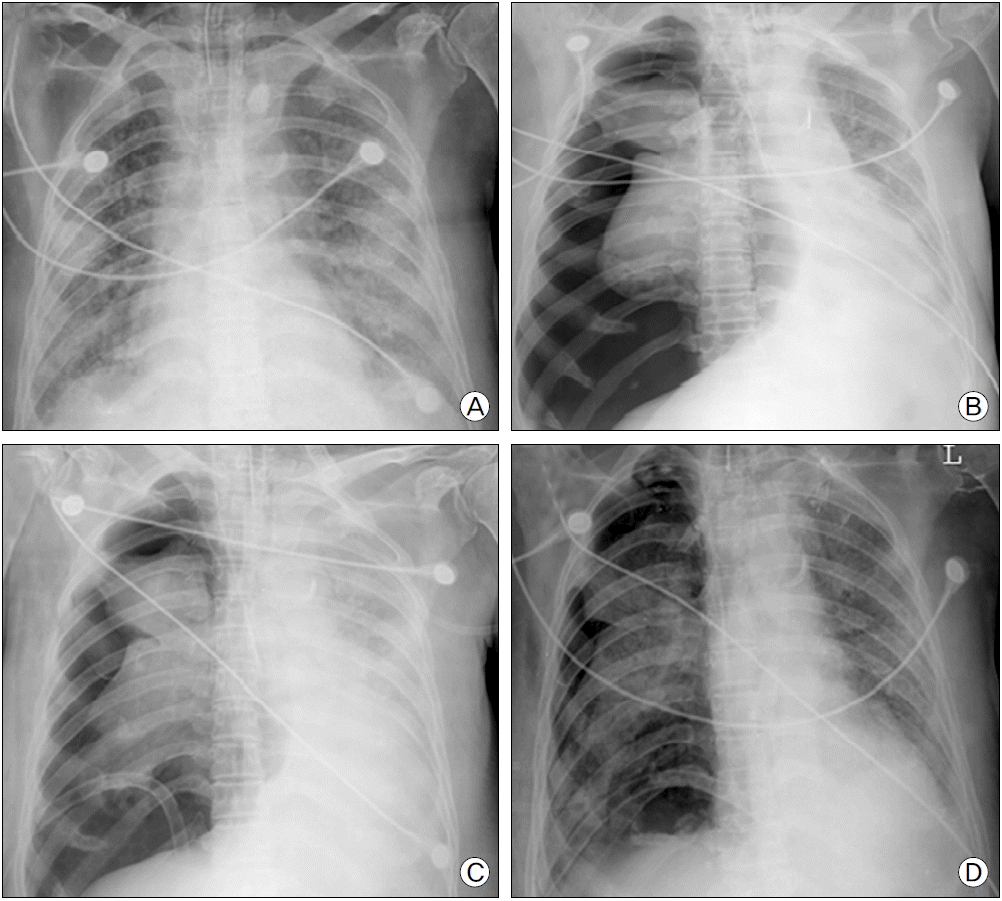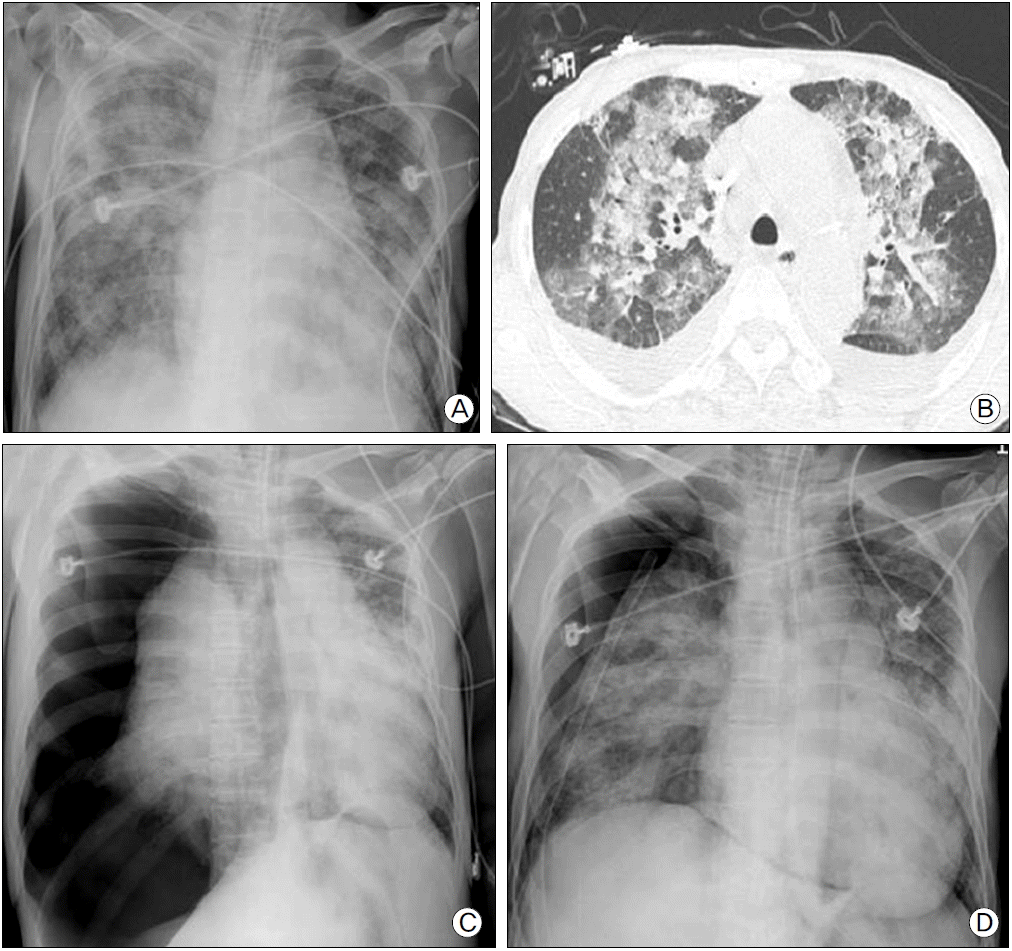1). Strange C. Pleural complications in the intensive care unit. Clin Chest Med. 1999; 20:317–27.

2). Gammon RB, Shin MS, Buchalter SE. Pulmonary barotrauma in mechanical ventilation. Patterns and risk factors. Chest. 1992; 102:568–72.
3). Petersen GW, Baier H. Incidence of pulmonary barotrauma in a medical ICU. Crit Care Med. 1983; 11:67–9.

4). de Latorre FJ, Tomasa A, Klamburg J, Leon C, Soler M, Rius J. Incidence of pneumothorax and pneumonediastinum in patients with aspiration pneumonia requiring ventilatory support. Chest. 1977; 72:141–4.
5). Zwillich CW, Pierson DJ, Creagh CE, Sutton FD, Schatz E, Petty TL. Complications of assisted ventilation. A prospective study of 354 consecutive episodes. Am J Med. 1974; 57:161–70.
6). Rankine JJ, Thomas AN, Fluechter D. Diagnosis of pneumothorax in critically ill adults. Postgrad Med J. 2000; 76:399–404.

7). Light RW. Tension pneumothorax. Intensive Care Med. 1994; 20:468–9.

8). Raghavendran K, Napolitano LM. Definition of ALI/ARDS. Crit Care Clin. 2011; 27:429–37.

9). Wasserberger J, Ordog GJ, Turner AF, Eskridge J, Bryon G, Eubanks DH, et al. Iatrogenic pulmonary overpressure accident. Ann Emerg Med. 1986; 15:947–51.

10). Sassoon CS, Light RW, O’Hara VS, Moritz TE. Iatrogenic pneumothorax: etiology and morbidity. Results of a Department of Veterans Affairs Cooperative Study. Respiration. 1992; 59:215–20.
11). Anzueto A, Frutos-Vivar F, Esteban A, Alía I, Brochard L, Stewart T, et al. Incidence, risk factors and outcome of barotrauma in mechanically ventilated patients. Intensive Care Med. 2004; 30:612–9.

12). Chen KY, Jerng JS, Liao WY, Ding LW, Kuo LC, Wang JY, et al. Pneumothorax in the ICU: Patient outcomes and prognostic factors. Chest. 2002; 122:678–83.
13). Amato MB, Barbas CS, Medeiros DM, Magaldi RB, Schettino GP, Lorenzi-Filho G, et al. Effect of a protective-ventilation strategy on mortality in the acute respiratory distress syndrome. N Engl J Med. 1998; 338:347–54.

14). Petrucci N, Iacovelli W. Ventilation with lower tidal volumes versus traditional tidal volumes in adults for acute lung injury and acute respiratory distress syndrome. Cochrane Database Syst Rev. 2004; (2):CD003844.

15). Boussarsar M, Thierry G, Jaber S, Roudot-Thoraval F, Lemaire F, Brochard L. Relationship between ventilatory settings and barotrauma in the acute respiratory distress syndrome. Intensive Care Med. 2002; 28:406–13.

16). Steier M, Ching N, Roberts EB, Nealon TF Jr. Pneumothorax complicating continuous ventilatory support. J Thorac Cardiovasc Surg. 1974; 67:17–23.

17). Schnapp LM, Chin DP, Szaflarski N, Matthay MA. Frequency and importance of barotrauma in 100 patients with acute lung injury. Crit Care Med. 1995; 23:272–8.

18). Yarmus L, Feller-Kopman D. Pneumothorax in the critically ill patient. Chest. 2012; 141:1098–105.

19). Xirouchaki N, Magkanas E, Vaporidi K, Kondili E, Plataki M, Patrianakos A, et al. Lung ultrasound in critically ill patients: comparison with bedside chest radiography. Intensive Care Med. 2011; 37:1488–93.

20). Havelock T, Teoh R, Laws D, Gleeson F. Pleural procedures and thoracic ultrasound: British Thoracic Society Pleural Disease Guideline 2010. Thorax. 2010; 65(Suppl 2):ii61–76.







 PDF
PDF Citation
Citation Print
Print


 XML Download
XML Download